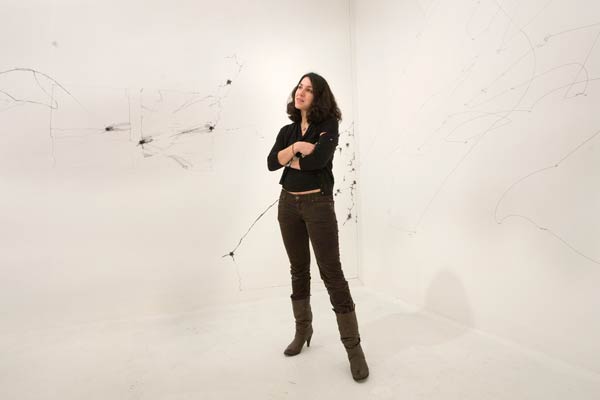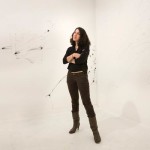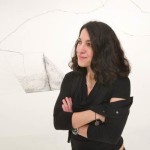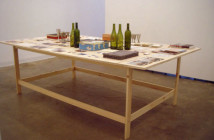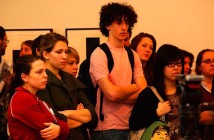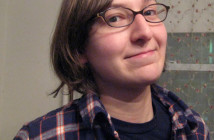ANNABEL DAOU @ THE DAVID WINTON BELL GALLERY
Linguistics in contemporary art is an amalgamated concept developed to provide additional territory to the diminished landscape of the now obsolete avant-garde. It's strategically similar to other movements in the arts, which have relied heavily on the idea of removing the usual context in which an object is seen and or experienced. Putting my own artistic prejudices aside, I can see how this idea is appealing to a great number of contemporary artists; it could bring an air of authenticity to an otherwise aesthetically insolvent work of art. The science of language and its correlation to text and symbols in art has been a lengthy and intertwined one. In its simplest modern approach you could look towards Guillaume Apollinaire's Calligrammes: Poems of Peace and War (1913-1916). You can follow it back all the way to Kufic script, which is said to be the oldest form of Arabic calligraphy. It's safe to say it's not anything new.
Linguistics in the context of fine art is a valid model for today's artists. There is only one condition which I would argue against it. That would be when a work of visual art lacks any understanding of beauty. I am specifically referring to the difference between Aesthetics and Taste. This idea reflects my sentiments in regard to the exhibition "KNOT" by the artist Annabel Daou. "KNOT" is currently on display at the David Winton Bell Gallery at Brown University, from January 24th through March 8th.
Annabel Daou is a Lebanese born, New York based artist. The exhibition "KNOT" is billed as a solo exhibition, but its roots are based in a collaboration project with the poet/writer Davis Markus. The title "KNOT" is clarified by curator Vesela Sretenovic in this quote: "an inherent reversibility between the text and image, reading and seeing, reflection and experience, creation and interpretation". I wish to bring to the reader's attention that this collaboration produced a plethora of artifacts. There were twelve words chosen by Markus to be visually interpreted by Daou. The twelve words produce twelve notebooks of Daou's drawings. A twelve-fold accordion brochure that renders the twelve notebooks into a single line is also a side-effect of this collaboration. The exhibition is broke up into two sections, there is a darkly lit smaller gallery at the entrance of the exhibition, that houses a single pedestal on which the twelve books are arranged; and yes, you can touch any of the twelve books. In a larger gallery there is an ambitious effort at a site-specific wall drawing. Last but not least, to bring this entire production into the 21st century, there is a website, which is a flash version of the twelve-fold accordion brochure.
One thing I noticed about the book section of the exhibition was that the books retained their sense of intimacy. The pedestal, which they were laid upon, was at the furthest point away from the entrance of the room, isolating the books with one spotlight. This, in my opinion, is a very effective technique in reinforcing the inherent sense of intimacy that is in all books. The drawings inside the books, which my traveling companion described as doodles, are just doodles. There was no aesthetic quality of beauty in Daou's scribbles or eraser marks. To me, they seemed to be manufactured with the intent of pointing directly to linguistics. Even as an object of art they are just boring to look at.
The site-specific wall drawing is anything but successful. I was told in my youth, that in order to make a great painting, you have to have a great drawing. I'm assuming this theory applies to site-specific wall drawings. In order to make a great wall drawing, you need to have great drawing. So I'm not that surprised that Daou never arrived at a great wall drawing made from her preparatory doodles. I have to admit, that the only thing I found redeeming about the actual wall drawing was the floor.
The artist's decision to paint the floor of the gallery white was successful in creating a disorientating environment. It is meant to produce a visceral response from the viewer, which it does, all the way up to the ceiling, which is in such a state of disarray that it is hard to imagine you are standing in an art gallery in an ivy-league school. I'm pretty certain that Ms. Daou did not intend for viewers to walk away from this piece wondering why the strongest reaction to the piece itself is about an area of the environment that she didn't draw on; secondly you can't take anyone very seriously if the standards by which they measure their own aesthetics are rested on inadequate craftsmanship.
Recently I realized that no one has even succeeded in taking Jackson Pollock's formalistic theory in painting to the next level. It basically ended a year before his death in 1956. Perhaps part of art's evolution is that Pollock realized that his style of painting was leading him down a dead end road, or that he had exhausted all his possibilities in painting. Historians speculate that the last year of Pollock's life he went back into the fray to find the edge again. I can't help but feel the same way about Annabel Daou's "KNOT". I keep asking myself the same questions, does the exhibition "KNOT" advance the relationship between linguistics and art? Does it even reveal a greater understanding of the idea of linguistics in contemporary artwork? Or is she, like Pollock, at the end of a dead end road?
- Annabel Daou
- Annabel Daou
David Winton Bell Gallery at Brown University
"Annabel Daou: Knot" is on view January 24 - March 8, 2009 at the David Winton Bell Gallery.
All images are courtesy of the artist and the David Winton Bell Gallery.

